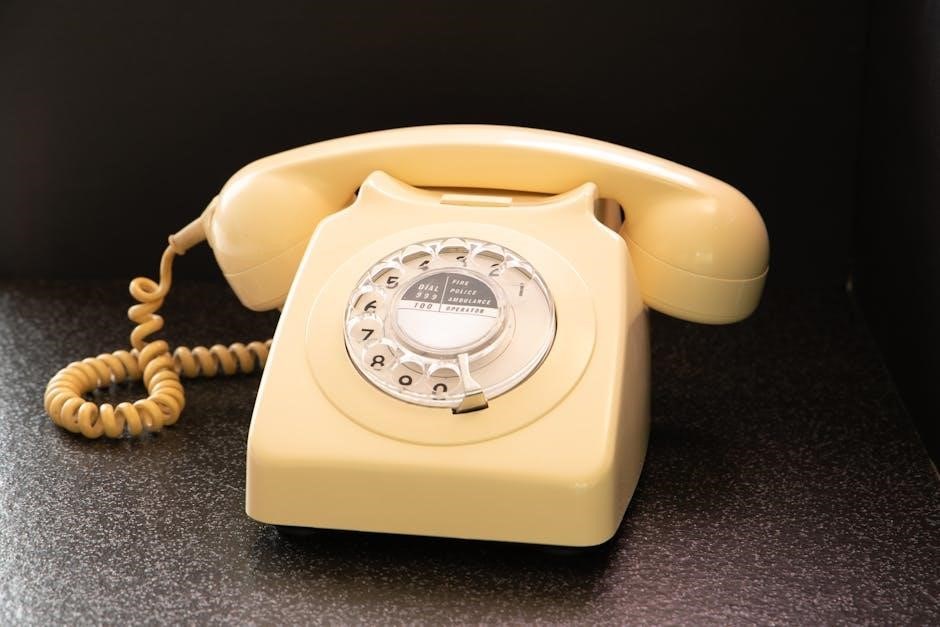Chase wire transfers are a secure and efficient way to move funds domestically or internationally. They are commonly used for large transactions due to their reliability and speed, with funds typically available within one business day.

1.1 What is a Wire Transfer?
A wire transfer is a direct and secure method of sending money electronically from one person or business to another. It involves transferring funds between bank accounts, often facilitated by networks like SWIFT for international transactions. Wire transfers are known for their speed and reliability, with domestic transfers typically processed within the same business day and international transfers completed within a few business days. Unlike checks or credit card payments, wire transfers do not involve physical money, making them a popular choice for large or time-sensitive transactions. They can be initiated online, over the phone, or in person at a bank branch. Wire transfers are commonly used for both domestic and international payments, such as paying bills, sending money to family, or conducting business transactions. The process requires specific details, including the recipient’s bank account number, routing number, and, for international transfers, a SWIFT code. Wire transfers are irreversible once processed, emphasizing the importance of accurate information to ensure funds reach the correct recipient.

Benefits of Using Chase Wire Transfers
Chase Wire Transfers offer fast, secure, and reliable fund transfers, providing convenience for domestic and international transactions. They are ideal for individuals and businesses needing efficient, trustworthy, and easily accessible payment solutions.
2.1 Speed and Efficiency
Chase Wire Transfers are renowned for their rapid processing, ensuring funds are typically available within one business day for domestic transfers and two business days for international transactions. This swift service is crucial for urgent financial needs, providing users with peace of mind and reliability. By leveraging advanced banking networks and secure systems, Chase guarantees that wire transfers are executed efficiently, minimizing delays and ensuring seamless transactions. Whether for personal or business purposes, the speed and efficiency of Chase Wire Transfers make them a preferred choice for individuals and organizations requiring quick access to funds. This reliability is further enhanced by Chase’s robust infrastructure, which prioritizes timely and accurate transfers, making it an ideal solution for both domestic and international financial transactions.
2.2 Security Features
Chase Wire Transfers are equipped with robust security measures to protect transactions from fraud and unauthorized access. The service utilizes secure networks, such as SWIFT, to ensure encrypted communication and verify the authenticity of transfers. Two-factor authentication adds an extra layer of protection, requiring users to confirm their identity before initiating a transfer. Additionally, Chase employs advanced fraud monitoring systems to detect and prevent suspicious activities in real time. Recipients’ details are thoroughly verified to minimize errors and ensure funds reach the intended account. Each wire transfer is assigned a unique reference number, allowing both sender and recipient to track the transaction securely. These security features help safeguard sensitive financial information and maintain the integrity of every transaction, making Chase Wire Transfers a trusted method for sending and receiving funds.
2.3 Convenience
Chase Wire Transfers offer unparalleled convenience, allowing users to initiate transactions from the comfort of their homes or offices. The online platform provides a user-friendly interface, enabling quick and straightforward wire transfer setup. Additionally, the Chase Mobile app offers on-the-go access, making it easy to send funds anytime, anywhere. The service supports same-day transfers for domestic transactions, ensuring urgency needs are met without delays. Recurring transfers can be scheduled in advance, eliminating the need for repeated setups. Furthermore, Chase provides pre-built templates for frequent transactions, saving time and reducing errors. Customers also have the option to visit a local branch or contact customer service for in-person or phone-based transfers, catering to diverse preferences. The availability of 24/7 customer support further enhances the convenience, offering assistance whenever needed. These features collectively make Chase Wire Transfers a flexible and accessible solution for managing funds efficiently.

Requirements for Initiating a Wire Transfer
Initiating a wire transfer requires the recipient’s full name, bank account number, routing number, and address. Ensure all details are accurate to avoid delays. Verify the information and comply with Chase’s specific guidelines for smooth processing.
3.1 Necessary Information for Wire Transfers
To initiate a wire transfer, specific details are required to ensure the transaction is processed correctly. The recipient’s full name, as it appears on their bank account, is essential. Additionally, you must provide their bank account number, routing number, and address. For international transfers, a SWIFT code or IBAN may be necessary, depending on the recipient’s bank. Accurate information is critical to avoid delays or errors. If the recipient’s bank is outside the U.S., additional details such as the bank’s address or country code may be required. Chase may also ask for a purpose of transfer to comply with regulatory requirements. Double-checking all details before submission is recommended, as errors can result in funds being misdirected or the transfer being rejected. Proper documentation, such as a government-issued ID for the recipient, may also be requested in some cases. Ensuring all information is accurate and complete helps facilitate a smooth and successful wire transfer process.
3.2 Documentation Needed
When initiating a wire transfer, certain documentation is required to ensure compliance with banking regulations and to verify the legitimacy of the transaction. A valid government-issued ID, such as a driver’s license or passport, is typically needed for both domestic and international transfers. For businesses, additional documentation like articles of incorporation or an Employer Identification Number (EIN) may be required. Proof of address, such as a utility bill or bank statement, may also be requested to confirm the sender’s identity. A completed wire transfer request form, which can be obtained from Chase, must be filled out accurately. For international transfers, documentation such as the recipient’s bank statement or a letter confirming their account details may be necessary. In some cases, additional paperwork, such as a purpose of transfer statement, may be required for large transactions or transfers to certain countries. Ensuring all documentation is complete and accurate helps prevent delays and ensures the transfer is processed smoothly.
3.3 Bank-Specific Requirements
Chase Bank has specific requirements for initiating wire transfers to ensure security and compliance; For domestic wire transfers, the sender must provide the recipient’s full name, bank account number, and routing number. For international transfers, additional details are needed, including the recipient’s SWIFT code, IBAN, and the name and address of the recipient’s bank. Chase may also require a valid government-issued ID for both domestic and international transactions. Businesses initiating wire transfers must provide their Employer Identification Number (EIN) and may need to submit additional documentation, such as articles of incorporation or a business license. Chase reserves the right to request further information if the transfer exceeds certain thresholds or if the transaction appears suspicious. Failure to meet these requirements may result in delays or rejection of the transfer. It’s important to verify all details with Chase to ensure compliance with their specific policies and procedures.

Step-by-Step Guide to Sending a Wire Transfer
Sending a wire transfer with Chase involves gathering recipient details, verifying account information, and initiating the transfer online, by phone, or in person. Ensure all required fields are accurately filled to avoid delays or rejection.
4.1 Online Method
The online method for sending a wire transfer via Chase is convenient and user-friendly. First, log in to your Chase online banking account using your credentials. Navigate to the “Pay & Transfer” section and select “Wire Transfer.” Enter the recipient’s details, including their full name, bank account number, and routing number for domestic transfers, or the SWIFT code and IBAN for international transfers. Review the information carefully to ensure accuracy. Once confirmed, the transfer is processed, and funds are typically available to the recipient within one business day for domestic transfers, while international transfers may take a few additional days. Always verify the transfer details before submission to avoid delays or errors.
4.2 Phone or In-Person Method
To initiate a wire transfer via phone or in person, contact Chase customer service or visit a local branch. For phone transfers, provide the recipient’s full name, bank account number, and routing number (for domestic transfers) or SWIFT code and IBAN (for international transfers). Verify the details with a Chase representative to ensure accuracy. In person, present the required information and complete a wire transfer form. A bank representative will assist with processing the transfer. For both methods, ensure all details are correct to avoid delays. Chase may require additional documentation for large or international transfers. Phone transfers are typically processed the same day if initiated before the cutoff time, while in-person transfers are processed immediately. Both methods offer a secure way to send funds, with the added benefit of direct assistance from Chase staff for complex transactions. Always confirm the transfer details before completion to prevent errors or fraud.

Receiving Wire Transfers
To receive a wire transfer, provide your Chase account number, routing number, and name to the sender. Ensure all details are accurate to avoid delays. Funds are typically available immediately upon receipt, offering a fast and secure way to receive money. Verify sender information to prevent fraud risks;

5.1 How to Receive Wire Transfers
To receive a wire transfer through Chase, ensure the sender has your correct Chase account and routing numbers. For international transfers, provide your SWIFT code (CHASUS33). Verify the sender’s details to avoid fraud. Once initiated, funds are typically available immediately. You can track the transfer via Chase Online or the mobile app. Provide clear instructions to the sender to prevent delays. Always confirm receipt with the sender and monitor your account for the transaction. For international transfers, additional fees may apply. Secure your account information to prevent unauthorized access. Use two-factor authentication for added security. Keep records of the transfer for future reference. Chase offers tools to track and verify wire transfers, ensuring a smooth experience. Ensure all details are accurate to avoid reversals or delays. Contact Chase support if you encounter issues. Receiving wire transfers is a reliable way to get funds directly into your account. Always review and confirm transaction details before finalizing. Chase’s secure platform protects your transactions, offering peace of mind for recipients. Follow these steps to ensure a seamless process. Monitor your account for incoming transfers and verify with the sender upon receipt. Chase’s system updates in real-time, allowing you to track the status of your wire transfer effortlessly. This method is ideal for both domestic and international transactions, providing convenience and efficiency. By adhering to these guidelines, you can safely and efficiently receive wire transfers through Chase.
5.2 Tracking Wire Transfers
Tracking wire transfers is essential for both senders and recipients to ensure transactions are processed smoothly. Chase provides multiple ways to monitor the status of wire transfers. Once initiated, senders can use Chase Online or the Chase Mobile app to track the transfer using the transaction reference number. Recipients can also monitor incoming transfers through their Chase account. For domestic transfers, funds are typically available within 24 hours, while international transfers may take 2-5 business days, depending on the destination. To track, log into your Chase account, navigate to the “Activity” or “Transactions” section, and look for the transfer details. If the transfer is delayed, contact Chase customer support with the reference number for assistance. Additionally, recipients can confirm receipt by checking their account balance or transaction history. Always keep the transfer confirmation details handy for easy tracking. Chase’s secure platform ensures transparency, allowing users to monitor transactions in real-time. This feature provides peace of mind and helps in resolving any potential issues promptly. Regularly check your account to stay updated on the status of your wire transfers.

Domestic vs. International Wire Transfers
Domestic wire transfers occur within the same country, while international transfers involve cross-border transactions. Domestic transfers are faster, with funds typically available the same day, while international transfers take longer due to additional processing requirements.
6.1 Key Differences
The primary distinction between domestic and international wire transfers lies in their processing, speed, and requirements. Domestic transfers are completed within the same country, typically within 24 hours, and require fewer details, such as the recipient’s bank routing and account numbers. International transfers, however, involve multiple banks and currencies, necessitating additional information like SWIFT codes and IBANs. They also take longer, often 2-5 business days, due to cross-border regulations and intermediary banks. Furthermore, international transfers incur higher fees and may involve currency conversion, which adds complexity and cost. Security measures are heightened for international transactions to combat fraud and comply with global financial regulations. Understanding these differences is crucial for individuals and businesses to choose the appropriate transfer method based on their needs and the recipient’s location. Proper documentation and adherence to specific requirements ensure smooth processing and minimize delays or rejections.
6.2 Special Considerations
When initiating international wire transfers, it is essential to consider currency exchange rates, as fluctuations can impact the final amount received. Additional documentation, such as SWIFT codes and IBANs, is required for international transactions to ensure accurate processing. International transfers often involve higher fees compared to domestic transfers, with charges from intermediary banks potentially applying. Processing times are longer due to cross-border regulations and the involvement of multiple financial institutions. Furthermore, international wire transfers are subject to stricter compliance measures to prevent fraud and money laundering. Recipients may also face local taxes or fees upon receiving funds. It is crucial to verify all details, including the recipient’s bank information, to avoid delays or rejection. Currency conversion fees and transfer limits may also apply, depending on the destination country. Being aware of these factors helps ensure a smooth and secure transaction. Proper planning and understanding of these considerations can mitigate potential issues and ensure funds reach their intended destination efficiently.

Fees and Charges Associated with Wire Transfers
Chase wire transfers incur fees based on transaction type and destination. Domestic transfers typically cost around $25-$30, while international transfers may range from $40-$50. Additional fees, such as exchange rate charges or intermediary bank fees, may apply. Always verify fees before initiating a transfer to avoid unexpected costs.
7.1 Fee Structure
Chase wire transfer fees vary depending on the type of transaction and its destination. For domestic wire transfers, Chase typically charges between $25 and $30 per transaction. International wire transfers are more costly, with fees ranging from $40 to $50 or more, depending on the recipient’s location and the specific services used.
In addition to these base fees, international transfers may incur extra charges, such as exchange rate fees or intermediary bank fees. Exchange rate fees are applied when converting funds to a foreign currency, while intermediary banks may charge a small fee for facilitating the transfer. These additional costs can increase the overall expense of sending money abroad.
It’s important to review Chase’s fee schedule before initiating a wire transfer, as fees may change over time. Additionally, some accounts or Chase services may offer reduced or waived fees for wire transfers, so it’s worth checking if you qualify for any discounts. Always confirm the total cost with Chase before proceeding to ensure transparency and avoid unexpected charges.
7.2 Avoiding Extra Charges
To minimize extra charges when using Chase wire transfers, ensure all recipient details are accurate and complete. Double-check the recipient’s name, account number, and routing information to avoid errors that may lead to additional fees or delays. For international transfers, verify the SWIFT code or IBAN to prevent intermediary bank charges.
Another way to avoid extra charges is by using online platforms for wire transfers, as they often have lower fees compared to in-person or phone transfers. Additionally, consider consolidating multiple smaller transfers into a single larger transfer to reduce the total number of transactions and associated fees.
Familiarizing yourself with Chase’s fee structure and any applicable exchange rate margins can also help you avoid unexpected costs. If possible, use accounts that offer fee waivers or discounts for frequent wire transfers. Always review the total cost before finalizing the transaction to ensure you understand all applicable charges.

Security Measures for Safe Wire Transfers
Chase wire transfers are protected by robust security measures to safeguard your transactions. Encryption technology ensures that sensitive information, such as account details and personal data, remains confidential during the transfer process.
To prevent fraud, Chase verifies the authenticity of wire transfer requests through multi-factor authentication. Additionally, recipients must match the beneficiary details provided, reducing the risk of unauthorized access to funds.
Monitor your account regularly for any unusual activity and report discrepancies immediately. Enable alerts for wire transfers to stay informed and detect potential fraudulent transactions early.
When initiating a wire transfer, ensure you are using Chase’s official online platform or visiting a verified branch. Avoid sharing sensitive information over unsecured communication channels, such as public Wi-Fi or unfamiliar websites.
Chase also offers fraud detection systems that flag and block suspicious transactions. Stay vigilant and never proceed with a transfer if you suspect any irregularities or unauthorized requests.
